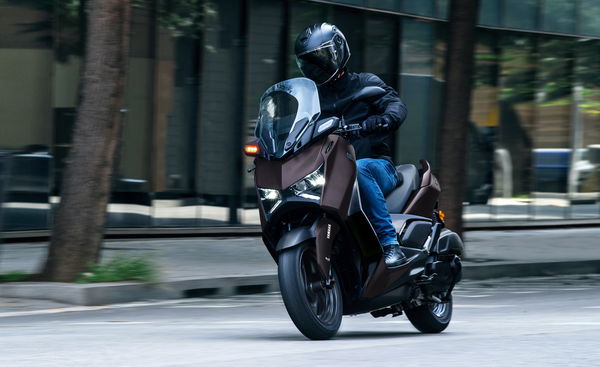The Ultimate Top 15 Sportsbikes that defined their generation
They are the motorcycles many crave, drool over at the very sight of one and dream of owning one day... but only these sportsbikes defined their generation
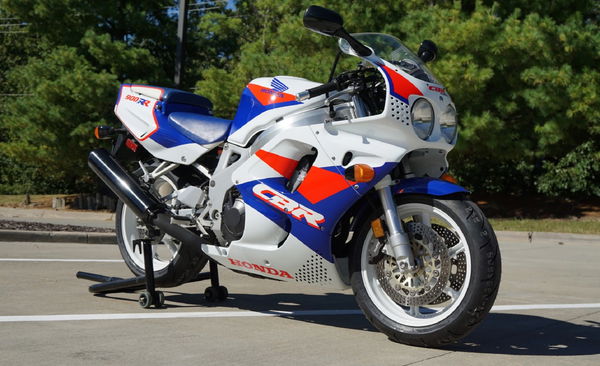
We all like a brilliant superbike.
Better still, we all love significant advances in new technology that make the best superbikes better still. But which have been the best – ever!
Which motorcycless have been the landmark machines, the true ‘game-changers’ that changed everything we thought we knew, a permenent etching on the sportsbike timeline of history.
If you own or have owned just one or more of these sportsbikes, you've had a great life!
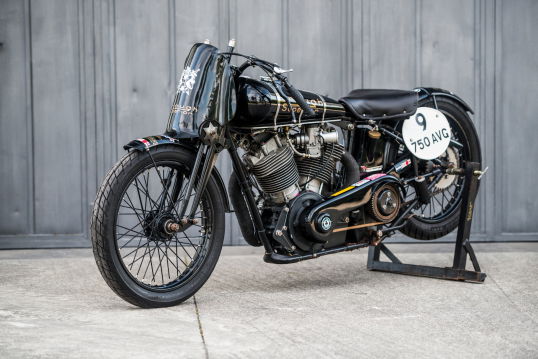
1924-40 Brough Superior SS100
It says plenty about the SS100 that it’s still talked about with such reverence nearly 100 years after it was first built. Simply, the SS100 has it all: so named for being personally certified by designer George Brough of being capable of 100mph; powered by a variety of the best ancillary V-twins of the day (commonly JAP but later Matchless); so lovingly bespoke hand-built they were dubbed ‘the Rolls-Royce of motorcycles’ (something approved, after inspection, by Rolls-Royce themselves); the holder of countless world speed records and, most famously of all, the preferred mount of the David Beckham of the 1920s and 30s, TE Lawrence (of Arabia) who reputedly owned up to eight. Today the SS100 is the most desirable of all classics, regularly attaining record auction prices. World famous US TV chat show host and petrol head, Jay Leno, meanwhile, owns SIX.
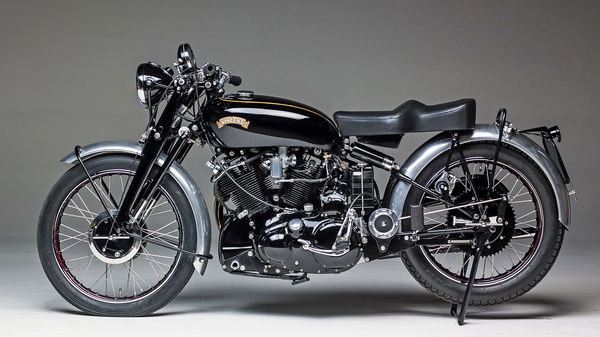
1948 Vincent Black Shadow
Second only to Brough in the pantheon of classic British sports motorcycles, Stevenage-based Vincent took over Brough’s ‘ultimate’ mantle post-WW2 (Brough ceasing motorcycle production in 1940 due to WW2, never to resume) with their glorious, handbuilt 1000cc V-twins, first the 45bhp Rapide then the upspecced, 55bhp, 125mph Black Shadow. A prototype was speed tested at Bonneville in September 1948 with rider Rollie Free famously stripping off and laying prone for his final run, recording a record 150mph, so becoming the ‘world’s fastest standard motorcycle’. Unveiled at the 1948 Earls Court Show the all-black machine was tested soon after by The Motor Cycle, who reported: “It is a connoisseur’s machine: one with speed and acceleration far greater than any other standard motor cycle; and with unique and ingenious features which make it one of the outstanding designs of all time.”
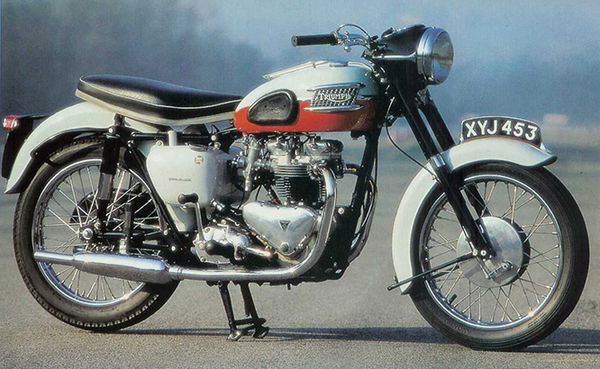
1959 Triumph Bonneville T120
Another British icon which ‘had it all’. Initially conceived as a limited edition, performance, twin carb version of the 650cc Tiger T110 (the number designating its performance in mph), the first Bonneville was built at the behest of Triumph’s US importer and was named in honour of Johnny Allen’s unratified land speed records set aboard a twin Triumph Thunderbird engine streamliner at the Bonneville Salt Flats in 1955 and 1956. Famously Edwards Turner’s last production design at Triumph, the original ‘Bonnie’ wasn’t a huge success. But with modified styling, an advertising campaign as ‘the best motorcycle in the world’ and 1963 improvements to unit construction it became established as THE performance motorcycle of the early 1960s and the engine of choice for Tritons, TriBSAs etc. By 1967 it was selling almost 30,000 examples a year but was overtaken by Honda’s CB750 in 1969 and struggled on through the 1970s. Today, though, the 1959 original is considered a true game-changer.
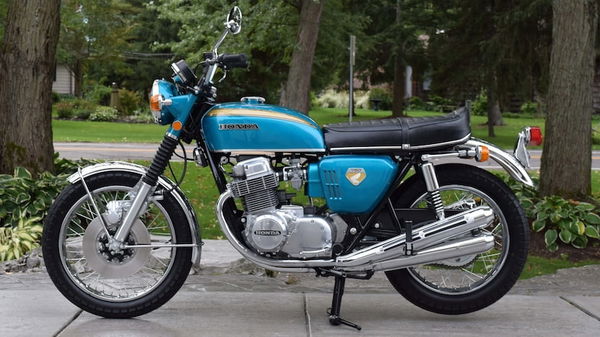
1969 Honda CB750
The first mass-production four-cylinder motorcycle also debuted disc brakes and today is lauded as the first ‘superbike’. Spawned out of Honda’s multi-cylinder racing success the CB was conceived to rival big British and American bikes in the US market with its 68bhp targeted to beat the 67bhp of Harley’s then 1200. In truth it was more tourer than sportster, revered for its smooth torque and only achieved racing success in specialist CR750 racer form, most notably at the 1970 Daytona 200. More significantly still it was smooth, reliable and, at $1495 when launched, almost $1000 cheaper than Triumph’s new Trident 750 triple, signaling the death knell for the British industry and paving the way for a new era of affordable, powerful Japanese multi-cylinder machines.
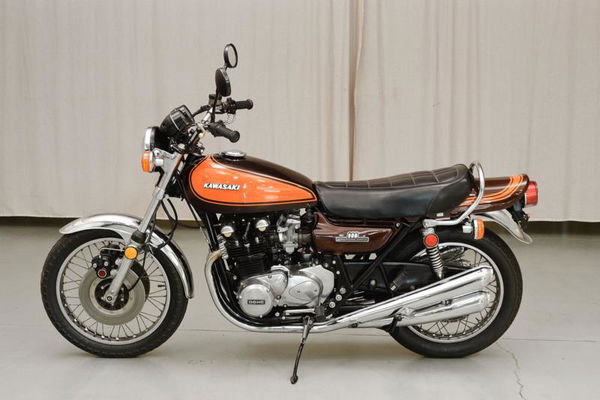
1973 Kawasaki Z1 900
Legend has it that Kawasaki was already well advanced with its own 750cc four when Honda unveiled the CB750 at the end of 1968, forcing Kawasaki back to the drawing board. The result four years later, developed under the code name ‘New York Steak’, spotted testing disguised as a Honda, and conceived to blow the Honda away, did exactly that. With a full 903cc and double overhead cams (the Honda had a single camshaft), the Z1 produced a whopping 82bhp, 15 more than the Honda, was a capable of over 130mph and overnight – and through most of the rest of the 1970s – was the new benchmark sports motorcycle and the go-to engine for drag and road racers and more.

1974 Ducati 750 Super Sport
Arguably the first truly accessible Italian superbike (yes, there was the 1973 MV Agusta 750S but few ever saw, let alone could afford, one of those), the Super Sport was effectively the road, production version of the desmo V-twin racer Paul Smart famously rode to victory at the 1972 Imola 200. As such it was the Ducati’s first production ‘L-twin’ with desmodromic valves (the preceding 750 GT and 750 Sport were both bevel-drive driven), while its fine handling, disc brakes and replica bodywork including fairing in silver/green established the very idea of Ducati sports exotica, setting the template the Bologna firm continues to this very day.
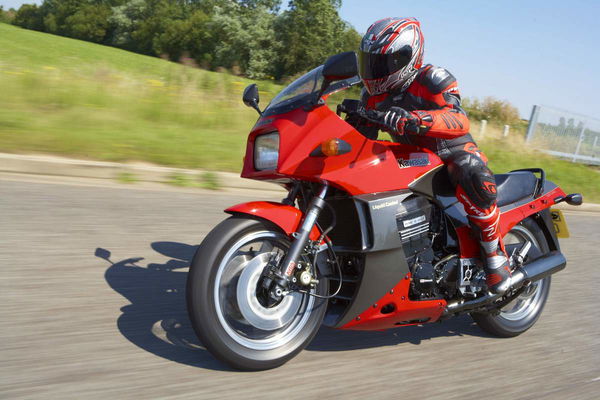
1983 Kawasaki GPZ900R
Conceived as the all-new successor to the Z1 900, the GPZ900R was arguably just as significant, setting the superbike template for a liquid-cooled, DOHC, 16v four that lives on today. A full seven years in development, the new ‘Ninja’ not only set a new standard for high revving performance (its 908cc producing 115bhp and capable of 150mph) but also for integrated, fine-handling design. Its spine frame was strong and stable, its short, compact design sharp steering and sweet handling and its standard full fairing effective. Superbike design moved on a generation in one fell swoop. The GPZ swept the 1984 Production TT and the big Kawasaki proved so good it remained in production a full 19 years…

1985 Suzuki GSX-R750
By general consensus, the first ‘racer replica’. Following in the footsteps of Suzuki’s RG Gamma two-strokes and conceived to be a racing ‘R’ version of its four-valve GSX four-stroke four, the GSX-R was inspired by Suzuki’s 1983 endurance world championship winning XR41 racer. That bike, powered by a GS1000 engine, was the successor to the steel framed, twin shock XR69 with the most significant upgrade being a much lighter aluminium box-section frame and monoshock rear. The road GSX-R replicated that lightweight ethos and style with a similar alloy frame, monoshock rear, high-revving, all-new 100bhp oil-cooled engine and twin beam, fully-faired racer styling that was the spit of the XR41. On the street the GSX-R was sensational but on track as a production racer it was better still, winning straight out of the box and inspiring a whole new genre of ‘repli-racer’ sports bikes.
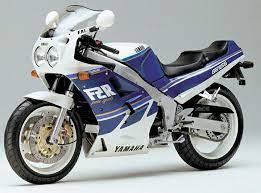
1987 Yamaha FZR1000R Genesis
If Kawasaki set the ball rolling for fine-handling Japanese sports bikes with the integrated design of its 1983 GPZ900R Ninja, Yamaha truly moved things to the next level with its FZR1000R ‘Genesis’ of 1987. The first Japanese sports bike to be designed as a ‘whole’ rather than a chassis being designed around an engine, the Genesis introduced mass production aluminium twin spar frames, Yamaha calling theirs ‘Deltabox’, thereafter the norm on large superbikes, powered it with a compact, 135bhp, 989cc five-valve four, gave it decent suspension and brakes and dressed it all in sporty, fully-faired, twin headlamp bodywork evolved from that of the GSX-R. The result was a new benchmark in all-round sporting brilliance and was further enhanced by Yamaha’s updated EXUP version in 1989 with exhaust valves, 145bhp, fatter 17inch rubber and even slicker styling.
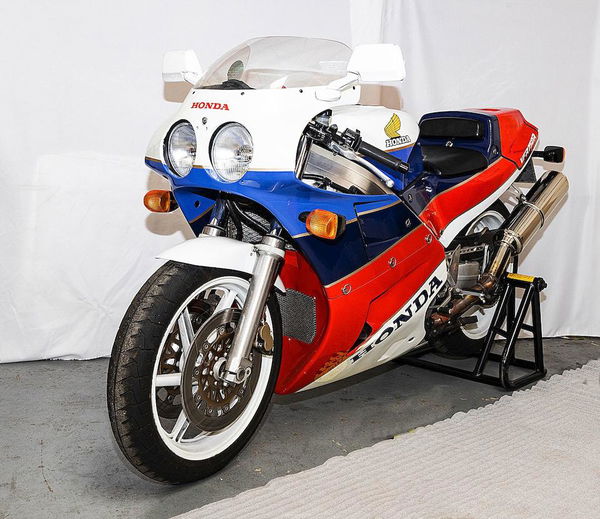
1988 Honda VFR750R/RC30
Arguably no production sports motorcycle has made as bigger impact as Honda’s sublime RC30. Effectively a racer with lights, Honda’s all-new machine was created purely to win on track and was sparked by both the creation of the new World Superbikes production-based racing championship and a change in regulations to a similar production formula for world endurance. To qualify, machines required a minimum production run. The RC30, designed and hand built by Honda’s racing arm, HRC, was Honda’s entry – and blew everyone away in WSB, endurance, F1, the TT and more. Its bespoke gear-cam V4 produced a fast, but equally important, flexible 118bhp; its twin beam chassis handled beautifully; it was light and compact and it was durable and beautifully made – and so what if it cost getting on for twice as much as an average Japanese road sportster. All of that added up to a new ‘ultimate’ in terms of Japanese sports bikes, a status the RC30 has largely retained to this day.
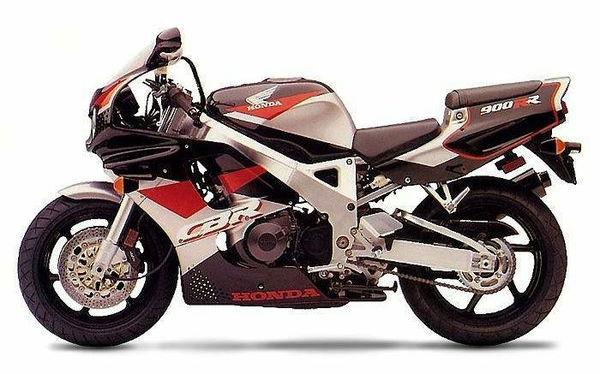
1992 Honda CBR900RR FireBlade
People forget that, between, say, 1983 and 1993, RC30 aside, Honda wasn’t particularly known for its big sports bikes. Its VFR750 was a sports tourer, its CBR1000F an overweight blancmange and if you wanted something 1000cc and sporty you wanted a Yamaha or Suzuki instead. That all changed with the revolutionary first FireBlade, the CBR900RR. The fabled brainchild of Tadao Baba, the Blade was originally conceived as a 750, then expanded, while its driving mantra was to be ultra light and compact – or, in the jargon of the day, ‘to have the performance of a 1000 but in a 600cc package’. The result, although its 893cc was not outrageously powerful, producing 122bhp, was simply a revelation. At 205kg wet the ‘Blade was a massive 34kg lighter than Yamaha’s FZR1000. With a wheelbase of just 1405mm it was stumpy and sharp and its all-round performance was simply ballistic. It was also so advanced it took all rivals – most notably Yamaha with its R1 – a full five years to catch up.
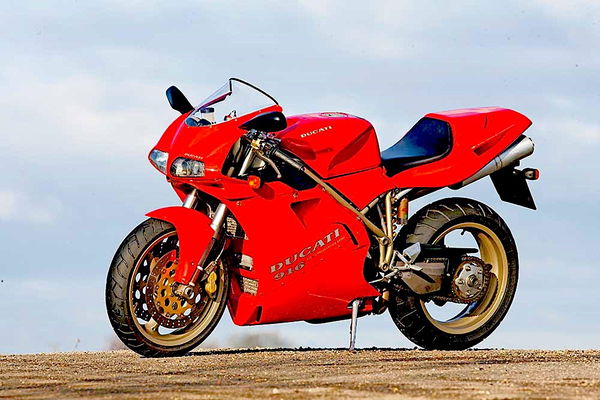
1994 Ducati 916
While it can be argued that, after the doldrums of the 1980s, Ducati first returned to sports bike supremacy with the brilliant liquid-cooled, four-valve, ‘Desmoquattro’ 851 of 1987, which was good enough to win the WSB title from 1990 to 1992, it was only with the succeeding 916 that it once again achieved true dominance – not just on the track but as an object of desire. Designed by Massimo Tamburini the 916 wasn’t just effective and fast (winning SIX WSB crowns, most famously with four for Brit Carl Fogarty), its striking styling was beautiful and features such as its underseat exhausts and single-sided swing arm became true trendsetters. The 916 also restored Ducati as king of the European superbike builders, a status the Italian brand has retained to this day.
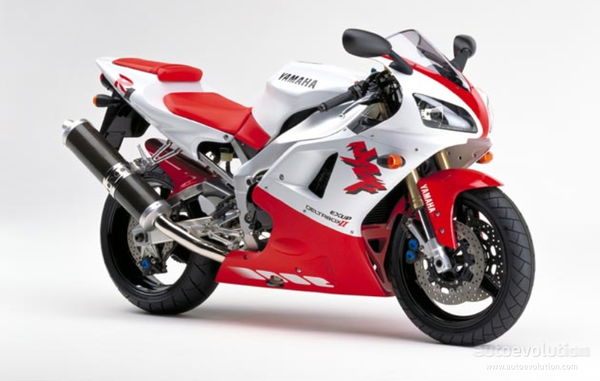
1998 Yamaha R1
After the game-changing 1992 FireBlade it took Honda’s Japanese rivals years to catch up but, boy, when they did they came back with a bang. Yamaha first bided their time with the 1993 YZF750R, which had genuine merit, and the 1996 YZF1000R ThunderAce, which had less so. But when it unveiled the YZF-R1 for 1998 it did so with the accompaniment of just two numbers: 150bhp and 177kg, both of which blew all comers away. Clever tech such as a stacked gearbox enabled a short engine in turn allowing a longer swingarm for nimble steering but also stability. The R1 was also ballistically fast and spawned a whole new family of Yamaha ‘R’ sports machines.

2009 BMW S1000RR
While much of the Noughties saw only incremental sports bike advances from the big Japanese manufacturers the end of the decade saw a new European revolution. Both came from the least expected of manufacturers. First came BMW, whose reputation until then had been based on boxer-powered tourers and adventure bikes. That very fact made it all the more astonishing when it unveiled the all-new S1000RR at the Monza WSB round in May 2009 boasting not just a class-redefining 195bhp but also with a new breed of electronic rider aids including traction control. It was the start of a new era for superbikes…
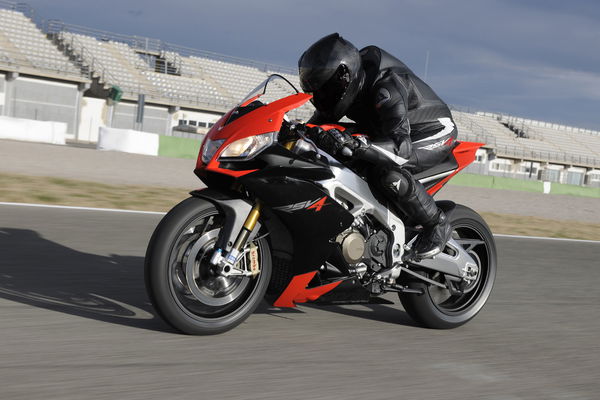
2010 Aprilia RSV4 Factory SE
The second European upstart was Aprilia. The would-be Ducati rivals had replaced its RSV V-twin with the RSV4 in 2009, which, a full decade before Ducati did the same trick, was a V4. Not only that, it was 180bhp powerful, had a small, compact, racer chassis bristling with the best cycle parts and, most significantly of all, with the following year’s SE version redefined the new electronic rider aids that were becoming available with, not only riding modes but also switchable 8-way traction control, 3-way anti-wheelie, 3-stage launch control, quickshifter and more. From this moment on, sports bike life would never be the same again…
![suzuki-rg-250-gamma-1985[1].jpg](https://cdn.visordown.com/field/image/suzuki-rg-250-gamma-1985%5B1%5D.jpg?width=600)
